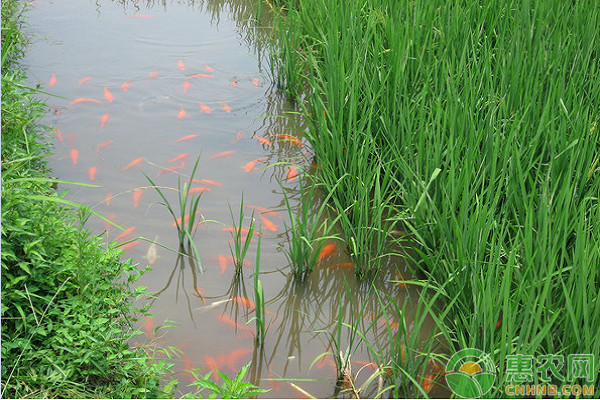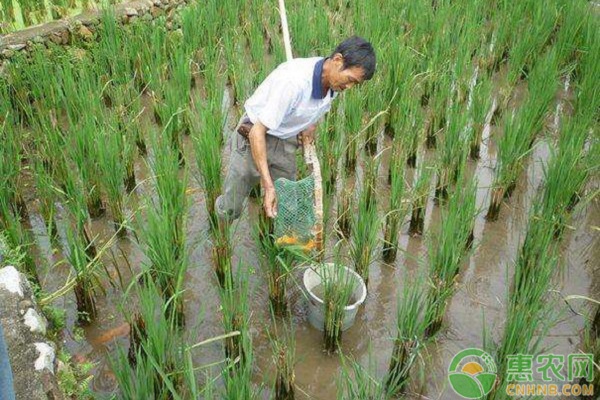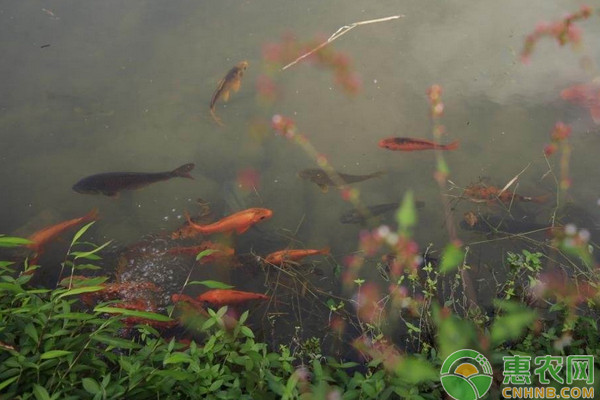Fund Project: Technical Points of Rice Cultivation Model of "Rice and Fish Symbiosis"
Pond aquaculture can increase farmers' incomes and meet the market's growing demand for aquatic products. At present, the ecological restoration method combining planting and breeding is an effective measure to solve the eutrophication of aquaculture water. Among them, the removal effect of pollutants in various aquaculture water bodies is most significant. In this context, some experts have explored through a number of years of experiments, and have developed a set of rice cultivation models suitable for the “rice-fish†symbiotic conditions of aquaculture ponds. 1 “rice-fish†symbiotic rice cultivation model The “rice-fish†symbiotic rice cultivation model is a new rice planting mode that combines traditional pond aquaculture with rice cultivation under the premise of normal aquaculture in ponds, using floating beds as carriers to carry out rice planting on pond water surface. Since the rice in the pond grows with nutrients in the water as a nutrient, it has a significant improvement effect on the eutrophication of the water caused by the excrement of feed and aquaculture animals. 2 Technical points of "rice-fish" symbiotic rice cultivation model 2.1 Floating bed preparation and pond layout Extruded polystyrene foam (XPS) was selected as the floating bed carrier. XPS has a perfect closed-cell honeycomb structure, which makes the XPS board extremely low in water absorption (almost no water absorption), low in thermal conductivity, high in pressure resistance and high in aging resistance. The XPS board used in the “rice-fish†symbiotic rice cultivation should use a plate with a size of 1.2m×0.6m×0.05m. According to the rice planting density, 10, 15, 18, 21 holes can be uniformly opened on each XPS plate. The diameter of the round hole is 13 cm. A plastic raft of suitable diameter is selected and placed in a circular hole in the XPS plate after being placed in the cultivation substrate. The pond depth is required to be 2.5m or more and the water depth is 1.5 to 2.5m. 15% to 20% of the general pond water surface can be used for laying XPS boards as floating beds and planting rice. The XPS board (horizontal or vertical) is placed neatly and fixed with nylon rope to form a rice planting area with a width of 0.6 m or 1.2 m. The reserved space between the communities is used as a channel for subsequent seedling planting, management and rice harvesting. . 2.2 Cultivation substrate selection Around the end of April each year, the pond water temperature is low, the fish feed is relatively small, and the nutrient content in the pond water body is relatively low. To ensure sufficient nutrients in the rice seedling stage, pond sediment can be used as the cultivation substrate. The use of pond sediment can not only provide nutrients for seedling growth, but also reduce the impact of weeds on rice growth. 2.3 Rice variety selection Because the rice in the floating bed of the pond is only fixed on a small amount of soil in the plastic raft, the rice is likely to fall down due to “top-heavy†in the late growth stage. Therefore, the “rice-fish†symbiotic rice should be planted with medium height, developed roots, strong vigor, and Rice varieties with strong supporting capacity should also take into account the varieties of tillering, yield, rice quality, lodging resistance, and low-fertilization. According to the screening test results, “Wanyou 66â€, “Fengyouxiangzhan†and “Yixiangyou 2115†were recommended as the varieties of “rice-fish†symbiotic rice cultivated in Chongqing. 2.4 cultivation methods Rice cultivation methods can be selected from traditional seedling transplanting and artificial direct seeding. Transplanting can ensure seedling quality, basic seedling number and planting uniformity, etc., thereby improving rice population quality and yield; live broadcast can greatly reduce labor intensity and save manpower. Material resources. After transplanting, the root growth has a certain bursting power, and the root system has obvious advantages. The number and length of new roots are significantly higher than that of wet seedling, which is beneficial to the lodging resistance and dry matter accumulation in the late growth stage of rice. Therefore, it is recommended to use the dry nursery transplanting method when pond floating rice is planted. When using live broadcast, pond bottom mud should be used as the cultivation substrate. When planting, the substrate should be kept in a muddy state with sufficient water content, and the height of the substrate in the flower bud should not be higher than the horizontal plane, so as to avoid the germination of rice seeds in the late stage. Rice seeds should be directly embedded in the cultivation substrate after disinfection and germination, and each flower can be sown 2 to 3 times. 2.5 cultivation density Due to insufficient fertility in the aquaculture pond water in the early stage of rice seedling growth, it is easy to cause insufficient tillering in the early stage of rice and less effective panicles in the later stage. In view of this, the planting density can be appropriately increased during transplanting or direct seeding, and the number of effective panicles can be increased by increasing the number of basic seedlings, thereby increasing the yield per unit area. According to the test, when the number of openings per XPS plate is 21 and the seedling planting density is 19454 points per 667 m2, the yield per pad of 667 m2 can reach 500 kg, which is 10, 15, and 18 per cell of XPS plate. Significantly improved. 2.6 Prevention and management of pests and diseases Rice is nutrients in pond water throughout the growth process and does not require any additional fertilizer. At the same time, in order to ensure the absolute safety of pond cultured aquatic products, no chemical agents can be applied to control pests and diseases of rice. However, due to the large interval between the floating bed planting areas, the ventilation and light transmission are better, and the diseases such as rice blast are almost zero. For pests such as aphids, physical control can be carried out by installing traps. In addition, the use of pond sediment as a substrate for cultivation can significantly reduce weed hazards. 2.7 real-time harvest After the rice is mature, the rice can be harvested by fishing boats or artificially pulling the floating bed to the pond, and the rice is dried and stored in time. 3 Benefit Analysis 3.1 Direct economic benefits Under the "rice-fish" symbiosis mode, the yield per 667m2 of rice is 500kg, calculated according to pollution-free rice 8 yuan/kg, 30 yuan per 667m2 of deducted seeds, 1200 yuan per 667m2 of floating bed, 300 yuan per 667m2 of artificial, every 667m2 Rice has a net income of 2,470 yuan. 3.2 Indirect economic benefits The “rice-fish†symbiosis model can improve water quality, reduce fish disease and reduce the cost of prevention. The cost per 667m2 is reduced by about 150 yuan. The improvement of water quality can improve the quality of aquatic products and indirectly increase the value of aquatic products. Or reducing the water exchange in the pond not only reduces the production cost, but also saves water resources to a large extent. 3.3 Ecological benefits The “rice-fish†symbiosis model can purify aquaculture water bodies, reduce non-point source pollution, and help promote water source protection in northeastern Chongqing. 4 Conclusion Floating bed rice planting under the “rice-fish†symbiosis mode has the following advantages: (1) It can improve the ecological environment of water bodies and reduce non-point source pollution. (2) It can improve resource utilization efficiency and reduce the use of chemical fertilizers and pesticides. (3) The application of chemical fertilizers and pesticides is not applied throughout the rice planting process, which can improve the quality of rice. (4) Rice planting in ponds can increase rice planting area and increase local rice production. (5) While the pond is planted in the effective purification of the aquaculture water, various nutrients have also been recycled, realizing the sustainable development of pond aquaculture and rice cultivation. Therefore, this technical model deserves further promotion and application. The above is a summary of the relevant technical points of the technical model, and analyze the benefits generated to promote the promotion and application of the technology model. 400G Salted Black Bean With Ginger Canned Salted Black Beans Recipe,Salted Fermented Black Beans Substitute,Chinese Fermented Black Beans,Salted Black Beans Coles jiangmen city hongsing food co., ltd. , https://www.jmhongsing.com


